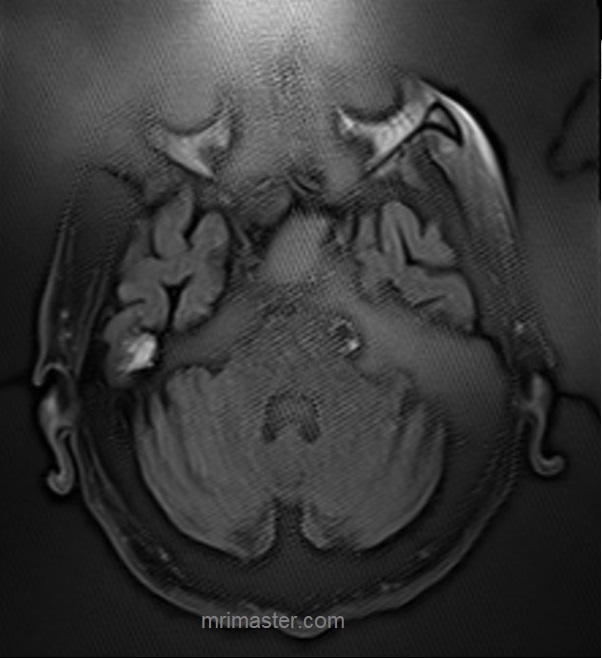MRI RF Overflow Artifact
RF overflow artifact in MRI refers to an imaging artifact that occurs when the radiofrequency (RF) signal exceeds the dynamic range of the receiver system. This can lead to signal saturation and overflow, resulting in streaks or areas of high intensity in the image that do not accurately represent the underlying anatomy.

Here are some strategies to minimize or avoid RF Overflow Artifacts
Reduce the transmit power: Adjust the RF transmit power or use lower flip angles to decrease the strength of the RF signal. This can help prevent saturation and overflow in areas with high signal intensity.
Use shorter echo times (TE): Shortening the TE can help reduce the impact of RF overflow artifacts by minimizing the accumulation of signal over time.
Utilize advanced pulse sequence techniques: Certain pulse sequence techniques, such as parallel imaging or spatially selective excitation, can help mitigate RF overflow artifacts by improving signal localization and reducing RF power requirements.
Optimize receiver gain and dynamic range: Adjust the receiver gain and dynamic range settings to ensure that the received signals fall within the linear range of the system. This can help prevent signal saturation and overflow.
Consider the use of advanced artifact correction algorithms: Some MRI systems offer built-in or post-processing algorithms designed to mitigate RF overflow artifacts. These algorithms can help restore the correct signal intensity and reduce the impact of the artifact.
References:
- Jackson, J. I., & Meyer, C. H. (1993). Gradient-echo imaging. Magnetic resonance imaging, 11(5), 603-617.
- Runge, V. M. (1991). The physics of MRI: a primer. Journal of magnetic resonance imaging, 1(3), 193-206.
- Bydder GM, et al. Artifacts in imaging: explanations and solutions. Insights Imaging. 2011;2(4):373-386. (https://link.springer.com/article/10.1007/s13244-011-0102-z)
- Lauenstein TC, Sharma P, Hughes T, et al. Evaluation of optimized inversion-recovery fat-suppression techniques for T2-weighted abdominal MR imaging. J Magn Reson Imaging. 2008;27(6):1448-1454.
